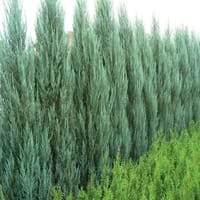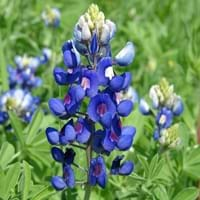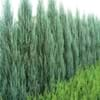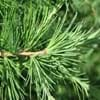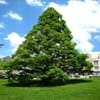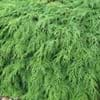Life Span
Perennial
Perennial
Type
Needled or Scaled Evergreen
Flowering Plants
Origin
Hybrid origin, North America
Mediterranean, North Africa, Northern America
Types
Not Available
Anthony Peak Lupine, Silver Bush, Garden Lupine, Spider Lupine, Adonis Lupine
Number of Varieties
Not Available
Habitat
Cold Regions, Dry areas, Dry Forest
Pine barrens, Sandy areas
USDA Hardiness Zone
3-7
3-7
Sunset Zone
1a, 1b, 2a, 2b, 3a, 3b, 5, 6, 7, 8, 9, 10, 11, 12, 13, 14, 15, 16, 17, 18, 19, 20, 21, 22, 23, 24
1a, 1b, 2a, 2b, 3a, 3b, 4, 5, 6, 7, 14, 15, 16, 17
Habit
Pyramidal
Upright/Erect
Flower Color
Non Flowering Plant
Blue, Pink, White
Flower Color Modifier
Bicolor
Not Available
Fruit Color
Blue
Not Available
Leaf Color in Spring
Green
Light Green
Leaf Color in Summer
Green
Green
Leaf Color in Fall
Green
Green
Leaf Color in Winter
Green
Not Available
Leaf Shape
Acicular
Oblovate
Plant Season
Spring, Summer, Fall
Summer
Sunlight
Full Sun
Full Sun, Part sun
Type of Soil
Clay, Loam, Sand
Loose, Moist
The pH of Soil
Acidic, Neutral, Alkaline
Slightly Acidic
Soil Drainage
Well drained
Well drained
Bloom Time
Spring
Late Spring, Summer
Tolerances
Drought
Not Available
Where to Plant?
Ground
Ground
How to Plant?
stem tip cuttings, Tip cutting
Seedlings
Plant Maintenance
Medium
Medium
Watering Requirements
Average Water Needs, Do not water frequently
Form a Soil ring to water efficiently, Keep the ground moist but not water-logged, Requires a lot of watering, Water in morning to avoid prompting diseases
In Summer
Lots of watering
Lots of watering
In Spring
Moderate
Moderate
In Winter
Average Water
Average Water
Soil pH
Acidic, Neutral, Alkaline
Slightly Acidic
Soil Type
Clay, Loam, Sand
Loose, Moist
Soil Drainage Capacity
Well drained
Well drained
Sun Exposure
Full Sun
Full Sun, Part sun
Pruning
Remove damaged leaves, Remove dead branches, Remove dead leaves
Prune ocassionally
Fertilizers
All-Purpose Liquid Fertilizer
All-Purpose Liquid Fertilizer
Pests and Diseases
Red blotch
Aphids, Fusarium wilt, Root rot, Thripes
Plant Tolerance
Drought
Drought
Flowers
Insignificant
Yes
Flower Petal Number
Single
Single
Fragrant Bark/Stem
Yes
No
Foliage Texture
Medium
Medium
Foliage Sheen
Not Available
Matte
Attracts
Aphids, Early/Late Blight
Bees
Allergy
Not Available
Abdominal pain, Asthma, Nausea, Swelling in the face, Vomiting
Aesthetic Uses
Not Used For Aesthetic Purpose
Showy Purposes
Beauty Benefits
Not Available
Not Available
Environmental Uses
Air purification
Air purification
Medicinal Uses
Cold, Cough, Laxative
Anthelmintic, Diuretic, Treatment of ulcers
Part of Plant Used
Shoots, Stem
Flowers, Seeds
Other Uses
Not Available
Showy Purposes, Used as Ornamental plant, Used for fragrance
Used As Indoor Plant
No
No
Used As Outdoor Plant
Yes
Yes
Garden Design
Foundation, Hedges, Mixed Border, Rock Garden, Wall, Screening, Wind Break
Bedding Plant, Container, Feature Plant, Foundation, Rock Garden
Botanical Name
JUNIPERUS scopulorum 'Cologreen'
Lupinus
Common Name
Rocky Mountain juniper
Hybrid Lupine
In Hindi
Juniperus scopulorum
वृक संयंत्र
In German
Juniperus scopulorum
lupine
In French
Juniperus scopulorum
usine de lupin
In Spanish
Juniperus scopulorum
planta de lupino
In Greek
Juniperus scopulorum
φυτό λούπινο
In Portuguese
Juniperus scopulorum
tremoço planta
In Polish
Juniperus scopulorum
łubin roślin
In Latin
Juniperus scopulorum
Plinio herba
Phylum
Tracheophyta
Magnoliophyta
Class
Pinopsida
Magnoliopsida
Family
Cupressaceae
Fabaceae
Clade
Not Available
Not Available
Tribe
Not Available
Not Available
Subfamily
Not Available
Faboideae
Season and Care of Juniperus scopulorum and Lupine
Season and care of Juniperus scopulorum and Lupine is important to know. While considering everything about Juniperus scopulorum and Lupine Care, growing season is an essential factor. Juniperus scopulorum season is Spring, Summer and Fall and Lupine season is Spring, Summer and Fall. The type of soil for Juniperus scopulorum is Clay, Loam, Sand and for Lupine is Loose, Moist while the PH of soil for Juniperus scopulorum is Acidic, Neutral, Alkaline and for Lupine is Slightly Acidic.
Juniperus scopulorum and Lupine Physical Information
Juniperus scopulorum and Lupine physical information is very important for comparison. Juniperus scopulorum height is 460.00 cm and width 150.00 cm whereas Lupine height is 2.95 cm and width 1.50 cm. The color specification of Juniperus scopulorum and Lupine are as follows:
Juniperus scopulorum flower color: Non Flowering Plant
Juniperus scopulorum leaf color: Green
Lupine flower color: Blue, Pink and White
- Lupine leaf color: Light Green
Care of Juniperus scopulorum and Lupine
Care of Juniperus scopulorum and Lupine include pruning, fertilizers, watering etc. Juniperus scopulorum pruning is done Remove damaged leaves, Remove dead branches and Remove dead leaves and Lupine pruning is done Prune ocassionally. In summer Juniperus scopulorum needs Lots of watering and in winter, it needs Average Water. Whereas, in summer Lupine needs Lots of watering and in winter, it needs Average Water.
